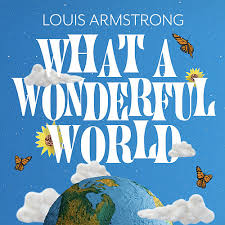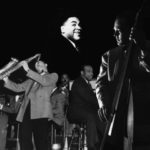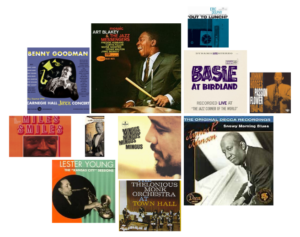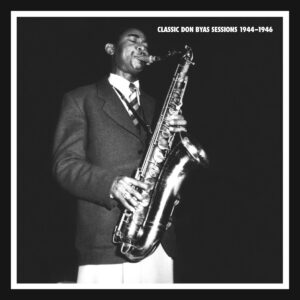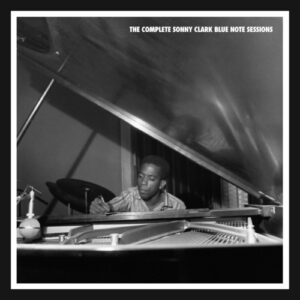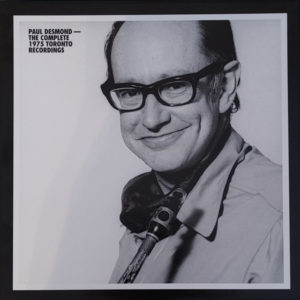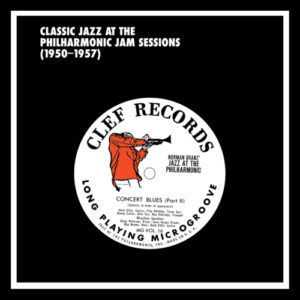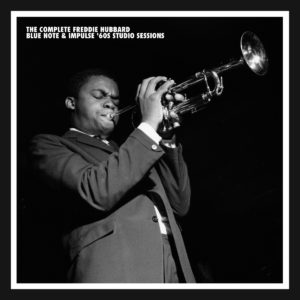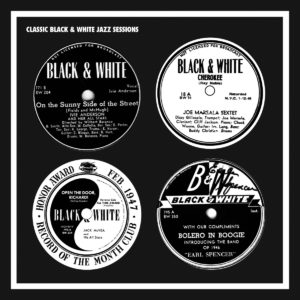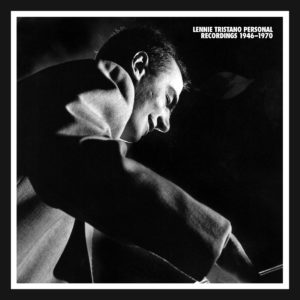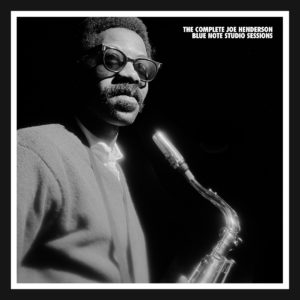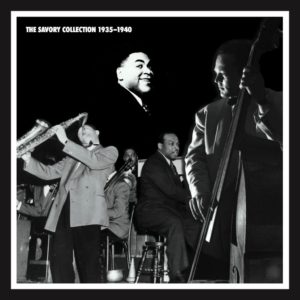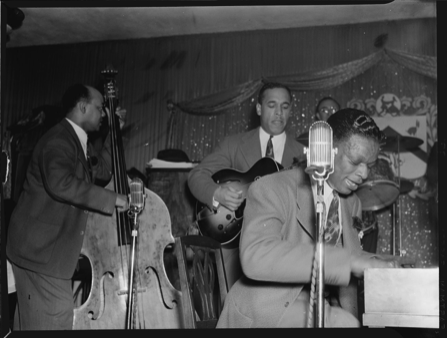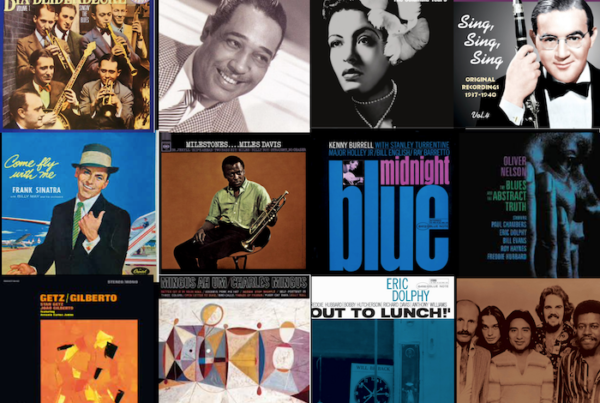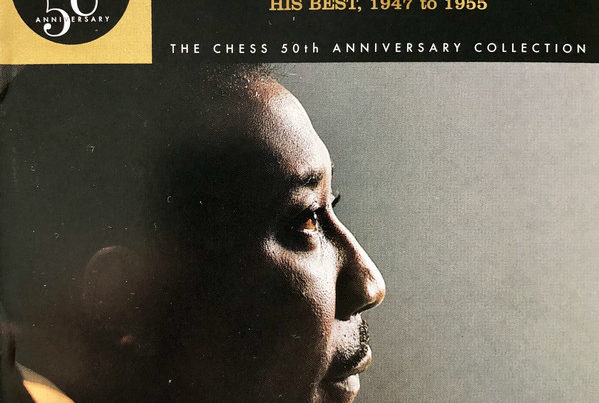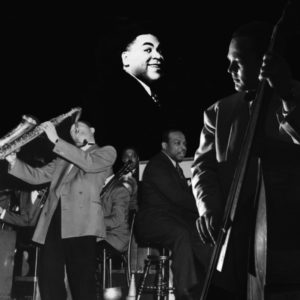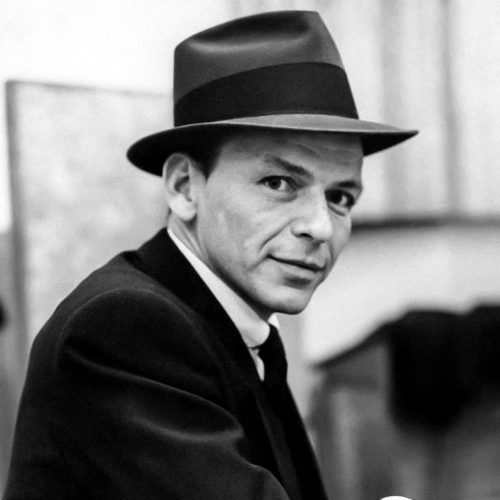
9 of Frank Sinatra’s Greatest Songs
By Billy Vera
Already mostly gone from this earth are the bobbysoxers whose shrieks rendered the man they called The Voice unheard at what began as a New Year’s gig at the Times Square Paramount Theatre in December, 1942. “The sound that greeted me,” Frank Sinatra recalled, “was absolutely deafening…I was scared stiff.” The gig, backed by Benny Goodman’s band, was extended to two months, eleven shows a day, starting at 8:10 am and ending at 2:30 the next morning. The joint’s 3,664 seats were filled each show, plus standing room.
Frank Sinatra & Tommy Dorsey
It was “Oh Frankie” time. The scrawny kid with the scar on the side of his face had escaped from a long-term contract with his previous employer, Tommy Dorsey, some said with a little help from some unsavory characters who the public would connect him with for the rest of his days.
I’ll Never Smile Again
But despite the unpleasant ending to their relationship, it was with Dorsey that he’d become famous, beginning with “Polka Dots And Moonbeams” in 1940. One of the great early Frank Sinatra songs was with the Pied Pipers “I’ll Never Smile Again,” featuring a young Jo Stafford, released the same year, found a new life a couple years later, thanks to wartime separation anxieties of couples torn apart. Another tune, given a second chance, that greatest of all wartime Frank Sinatra songs, “I’ll Be Seeing You,” was reissued in 1944.
Frank Sinatra’s songs during this period, mostly arranged by his Dorsey band friend Axel Stordahl, showed range and varying degrees of depth. His voice could go from light and youthful, as in “Time After Time” or “I Got A Crush On You,” to almost operatic items like “If You Are But A Dream,” “If I Loved You” or “Some Enchanted Evening.”
Hopelessly in love with the great screen beauty Ava Gardner, he learned to beg, plead and suffer for the object of his love. It was said that he even put his head in an oven and turned on the gas in desperation. Frankie had hit bottom.
In 1953, he heard of a part in a forthcoming motion picture that he just knew he could nail, if only the powers that be could be persuaded to audition the fallen star. A word from Ava to a studio head, and the role was his.
The dancer Bud Robinson who, with his wife Cece worked as an opening act for Sinatra and others, recalled, “We worked with Frank at Bill Miller’s nightclub in Frank’s hometown of Fort Lee, New Jersey right before From Here To Eternity was released and then again at the Copa the week after it came out. At the Riviera, he couldn’t fill a half a house. At the Copa, it was lines around the block. That’s how fast things turned around for him.”
Capitol Records came a-calling
The first single, “I’m Walking Behind You,” was a typical Stordahl chart and reached the top ten, his highest since “Castle Rock,” two years earlier. But the Capitol brass wasn’t satisfied.
I’m Walking Behind You
Frank and Axel were just more of the same old, same old that the fans had grown tired of. Something fresh and modern was needed. Nelson Riddle had been doing some nice things with Nat Cole. How about giving Nelson a shot?
I’ve Got The World On A String
“I’ve Got The World On A String” didn’t chart as high as the first one, but it was the beginning of a new Sinatra. The new year brought his first number one since “Mam’selle” in 1947. “Young At Heart” let the world know that Frankie–now Frank–was back, and with youth appeal to spare.
At the same time, the long-playing LP format was beginning to take hold, mainly in the ten-inch form. The decision was made for Capitol’s newest signing to record an album. But not just any album, one more collection of random tunes done professionally but not special.
With his producer, Voyle Gilmore and Riddle, Frank chose to do a concept album of the kind of material he knew his fans would like. Rather than a full orchestra, a small group of two reeds, four strings and a rhythm section would be used, to provide an intimate setting that would feature The Voice in all its many textures. The ultimate conversational crooner would now be center stage.
Thus, Capitol would be using a two-prong approach, as they had successfully done with Cole, singles for the juke box trade and LPs for the stay-at-home crowd.
The combination of Riddle’s fresh approach that fit Frank like a glove, and the Hollywood recording studios, which were superior to those in New York that had made his Columbia recordings sound, well, old did the trick.
The album, Songs For Young Lovers, was an enormous success, a classic for the ages, still in print after almost 70 years. It sold like a hit single and set in stone the approach that would make Frank Sinatra the greatest star of the 20th Century.
I Get A Kick Out Of You
The eight songs included items that remain favorites of Sinatra fans from several generations, “A Foggy Day,” “My Funny Valentine” and “I Get A Kick Out Of You.” When the twelve-inch LP replaced the previous ten-incher, four more songs were added.
While his singles sales were satisfactory, they weren’t spectacular. His #4 outing, “Three Coins In The Fountain” was bested by the Four Aces’ #1 version and the others reached only the middle of the charts, while his second ten-inch LP, Swing Easy did well.
But it was his next, In The Wee Small Hours, which took him to the land of perfection, the darkness he was feeling over the loss of Ava is fully realized and expressed in these mood songs and Riddle provides the right subtle accompaniment.
In The Wee Small Hours
At the last minute, with one more song needed, Dave Mann and Bob Hilliard came up with a piece of magic that would be the album’s title song.
At the same time, Frank and Nelson were finding the right formula for hit singles. On “Learnin’ The Blues,” Riddle slips in inferences to the rock’n’roll rhythms of Bill Haley, albeit done in a more musically harmonic manner.
The next two years showed them hitting their stride, with top ten hits, “Love And Marriage,” “The Tender Trap” and “Hey! Jealous Lover.”
Between October, 1955 and January, 1956, the team of Frank, Riddle and Gilmore recorded what most consider the ultimate Sinatra album, Songs For Swingin’ Lovers, with its centerpiece, “I’ve Got You Under My Skin,” the consummate Frank, confidently owning that Cole Porter masterpiece for all time.
I’ve Got You Under My Skin
Eager to spread his wings and become a label owner, he set about putting together Reprise Records, as he waited out his Capitol contract. “Witchcraft” was his last Capitol top ten hit, but “High Hopes,” from his movie, A Hole In The Head, and “Nice’n’Easy, while low-charting numbers, remain fan faves.
Classics too, are his Capitol LPs, Where Are You, arranged by Gordon Jenkins, Come Fly With Me, swinging big band charts by Billy May, and Nelson Riddle’s other favorite Sinatra album, after Swingin’ Lovers, the tender, broken-hearted Only The Lonely, with another great Sinatra ode to emptiness, “One For My Baby.”
Come Fly With Me
For his farewell 1961 Capitol album, many thought Frank would do something perfunctory, especially when he announced he intended to use his friend Stordahl for the arrangements. But this was not just Sinatra throwing a bone to his old pal, Frank’s pride in his art saw him choosing some of the greatest songs of an earlier era, Walter Houston’s signature “September Song,” “These Foolish Things (Remind Me Of You),” “As Time Goes By,” Eubie Blake and Andy Rasaf’s poignant “Memories Of You” and a remake of Frank’s wartime hit with Tommy Dorsey, “I’ll Be Seeing You.”
And so ended Frank Sinatra’s nine years with Capitol Records, which most consider the period of his greatest aesthetic achievements.
The Reprise Years
For his first session at his new home, he chose a new arranger, the up-and-coming Johnny Mandel. The album was Ring-a-Ding Ding. For his first single, however, taking no chances, he went back to the well with Riddle, Cahn and Van Heusen, the lovely “The Second Time Around.” Neither it, nor any from the next five years would reach the Billboard top ten, but his albums, even without the loyal Voyle Gilmore behind the glass, did well just the same.
The Second Time Around
It was a time to experiment. For I Remember Tommy, his peace offering to his old boss, who’d passed away in 1956, Frank chose Dorsey’s former arranger, Sy Oliver, in a selection of Swing Era favorites.
The singles ranged from contemporary ballads like, “Softly, As I Leave You,” to the silly, trendy “Ev’rybody’s Twistin’” to an interesting reading of just the verse of “Stardust,” arranged by Don Costa. By 1966, he was hitting his commercial stride, with the #1 hits, “Strangers In The Night” and “That’s Life,” while “Summer Wind” would see new life in the mob flick, Goodfellas some years later.
Producer Jimmy Bowen came up with the idea of teaming daughter Nancy with Daddy on “Something Stupid.” We will forgive him for missteps like “Bad, Bad Leroy Brown” or that forgettable LP of Bob Gaudio tunes or the Rod McKuen snoozefest. After all, he gave us, if not magic, “It Was A Very Good Year,” “Send In The Clowns,” the Antonio Carlos Jobim collaborations and the ever-popular “My Way.”
New York, New York
As long as New York City has New Year’s Eve or a winning New York Yankees, the world will be hearing Francis Albert Sinatra and “Theme From New York, New York,” and for that, we can be grateful.
Frank Sinatra
Live At Royal Festival Hall
1962
You Make Me Feel So Young
Live At The Kiel Opera House
St. Louis, MO
1965
Fly Me To The Moon
Top Charting Frank Sinatra Songs
| Year | Frank Sinatra Song Title | Chart Position |
| 1940 | “I’ll Never Smile Again” (gold record) | 1 |
| 1941 | “Dolores” | 1 |
| 1942 | “In the Blue of Evening” | 1 |
| 1942 | “There Are Such Things” (gold record) | 1 |
| 1946 | “Oh! What It Seemed to Be” | 1 |
| 1946 | “Five Minutes More” | 1 |
| 1947 | “Mam’selle” | 1 |
| 1955 | “Learnin’ The Blues” | 1 |
| 1966 | “Strangers in the Night” | 1 |
| 1967 | “Somethin’ Stupid” (with Nancy Sinatra) (gold record) | 1 |
| 1941 | “Oh! Look at Me Now” | 2 |
| 1943 | “You’ll Never Know” | 2 |
| 1944 | “Saturday Night (Is the Loneliest Night of the Week)” | 2 |
| 1946 | “They Say It’s Wonderful” | 2 |
| 1954 | “Young At Heart” | 2 |
| 1957 | “All The Way” | 2 |
| 1940 | “We Three (My Echo, My Shadow and Me)” | 3 |
| 1941 | “This Love Of Mine” | 3 |
| 1943 | “People Will Say We’re in Love” | 3 |
| 1956 | “Hey! Jealous Lover” | 3 |
| 1941 | “Do I Worry?” | 4 |
| 1944 | “I Couldn’t Sleep a Wink Last Night” | 4 |
| 1954 | “Three Coins In The Fountain” | 4 |
| 1966 | “That’s Life” | 4 |
| 1940 | “Our Love Affair” | 5 |
| 1942 | “Take Me” | 5 |
| 1945 | “Dream” | 5 |
| 1946 | “Day by Day” | 5 |
| 1947 | “I Believe” | 5 |
| 1950 | “Goodnight, Irene” (with The Mitch Miller Singers) | 5 |
| 1955 | “Love and Marriage” | 5 |
| 1942 | “Just As Though You Were Here” | 6 |
| 1946 | “The Coffee Song” | 6 |
| 1949 | “Some Enchanted Evening” | 6 |
| 1957 | “Witchcraft” | 6 |
| 1940 | “Stardust” | 7 |
| 1941 | “Let’s Get Away From It All” | 7 |
| 1944 | “White Christmas” | 7 |
| 1944 | “I Dream of You (More Than You Dream I Do)” | 7 |
| 1945 | “If I Loved You” | 7 |
| 1946 | “All Through The Day” | 7 |
| 1948 | “Nature Boy” (with The Jeff Alexander Choir) | 7 |
| 1953 | “I’m Walking Behind You” | 7 |
| 1955 | “(Love Is) The Tender Trap” | 7 |
| 1940 | “Imagination” | 8 |
| 1942 | “How About You?” | 8 |
| 1945 | “I Should Care” | 8 |
| 1946 | “The Things We Did Last Summer” | 8 |
| 1946 | “September Song” | 8 |
| 1947 | “So Far” | 8 |
| 1951 | “Castle Rock” | 8 |
| 1940 | “You’re Lonely and I’m Lonely” | 9 |
| 1941 | “Everything Happens to Me” | 9 |
| 1941 | “Two in Love” | 9 |
| 1943 | “Sunday, Monday, or Always” | 9 |
| 1945 | “You’ll Never Walk Alone” (with The Ken Lane Singers) | 9 |
| 1945 | “Don’t Forget Tonight Tomorrow” (with The Charioteers) | 9 |
| 1949 | “Don’t Cry Joe” (with The Pastels) | 9 |
| 1950 | “One Finger Melody” | 9 |
| 1940 | “Trade Winds” | 10 |
| 1943 | “Close to You” | 10 |
| 1945 | “Nancy (With the Laughing Face)” | 10 |
| 1947 | “That’s How Much I Love You” (with The Page Cavanaugh Trio) | 10 |
| 1949 | “The Hucklebuck” (with The Ken Lane Quintet) | 10 |
| 1950 | “Chattanoogie Shoe Shine Boy” | 10 |
| 1940 | “The One I Love (Belongs to Somebody Else)” | 11 |
| 1941 | “You And I” | 11 |
| 1944 | “A Lovely Way To Spend An Evening” | 11 |
| 1946 | “The Girl That I Marry” | 11 |
| 1947 | “This Is The Night” | 11 |
| 1940 | “Say It (Over and Over Again)” | 12 |
| 1940 | “Fools Rush In (Where Angels Fear to Tread)” | 12 |
| 1940 | “All This and Heaven Too” | 12 |
| 1941 | “I Guess I’ll Have To Dream The Rest” | 12 |
| 1943 | “Oh, What a Beautiful Mornin'” | 12 |
| 1942 | “Be Careful, It’s My Heart” | 13 |
| 1945 | “What Makes The Sunset?” | 13 |
| 1947 | “I Have But One Heart” | 13 |
| 1949 | “The Old Master Painter” (with The Modernaires) | 13 |
| 1955 | “Same Old Saturday Night” | 13 |
| 1956 | “(How Little It Matters) How Little We Know” | 13 |
| 1940 | “The Call of the Canyon” | 14 |
| 1941 | “You Might Have Belonged to Another” | 14 |
| 1948 | “But Beautiful” | 14 |
| 1949 | “Sunflower” | 14 |
| 1950 | “Nevertheless (I’m In Love with You)” | 14 |
| 1951 | “I’m a Fool to Want You” | 14 |
| 1953 | “I’ve Got The World on A String” | 14 |
| 1941 | “A Sinner Kissed An Angel” | 15 |
| 1942 | “Poor You” | 15 |
| 1942 | “I’ll Take Tallulah” | 15 |
| 1953 | “From Here to Eternity” | 15 |
| 1956 | “Can I Steal A Little Love?” | 15 |
| 1942 | “Night and Day” | 16 |
| 1947 | “Time After Time” | 16 |
| 1949 | “That Lucky Old Sun” | 16 |
| 1940 | “Love Lies” | 17 |
| 1940 | “I Could Make You Care” | 17 |
| 1942 | “The Last Call for Love” | 17 |
| 1942 | “The Street of Dreams” | 17 |
| 1942 | “Daybreak” | 17 |
| 1946 | “Full Moon and Empty Arms” | 17 |
| 1949 | “Let’s Take an Old Fashioned Walk” (with Doris Day) | 17 |
| 1951 | “You’re The One (for Me)” | 17 |
| 1954 | “Don’t Worry ’bout Me” | 17 |
| 1940 | “Polka Dots and Moonbeams” | 18 |
| 1946 | “From This Day Forward” | 18 |
| 1949 | “Bali Ha’i” | 18 |
| 1953 | “South of the Border (Down Mexico Way)” | 18 |
| 1944 | “If You Are But a Dream” | 19 |
| 1948 | “It Only Happens When I Dance With You” | 19 |
| 1952 | “The Birth of the Blues” | 19 |
| 1955 | “Melody of Love” | 19 |
| 1941 | “I Think of You” | 20 |
| 1947 | “Almost Like Being in Love” | 20 |
| 1952 | “Bim Bam Baby” | 20 |
| 1941 | “I Tried” | 21 |
| 1942 | “Light a Candle in the Chapel” | 21 |
| 1946 | “Something Old, Something New” | 21 |
| 1947 | “Stella by Starlight” | 21 |
| 1947 | “Ain’tcha Ever Comin’ Back” | 21 |
| 1947 | “The Dum Dot Song” (with The Pied Pipers) | 21 |
| 1948 | “All of Me” | 21 |
| 1948 | “Just For Now” | 21 |
| 1951 | “Mama Will Bark” (with Dagmar) | 21 |
| 1954 | “I Could Have Told You” | 21 |
| 1954 | “The Gal That Got Away” | 21 |
| 1945 | “The House I Live In” | 22 |
| 1951 | “We Kiss In a Shadow” | 22 |
| 1958 | “How Are Ya Fixed For Love?” (with Keely Smith) | 22 |
| 1945 | “Homesick, That’s All” | 23 |
| 1946 | “Begin The Beguine” | 23 |
| 1947 | “You’re My Girl” | 23 |
| 1948 | “What’ll I Do?” | 23 |
| 1954 | “Half as Lovely (Twice as True)” | 23 |
| 1968 | “Cycles” | 23 |
| 1947 | “A Fellow Needs a Girl” | 24 |
| 1948 | “My Cousin Louella” (with The Tony Mottola Trio) | 24 |
| 1952 | “I Hear a Rhapsody” | 24 |
| 1956 | “Flowers Mean Forgiveness” | 24 |
| 1948 | “Everybody Loves Somebody” | 25 |
| 1950 | “God’s Country” (with The Jeff Alexander Choir) | 25 |
| 1953 | “Lean Baby” | 25 |
| 1957 | “You’re Cheatin’ Yourself (If You’re Cheatin’ On Me)” | 25 |
| 1960 | “Ol’ Mac Donald” | 25 |
| 1966 | “Summer Wind” | 25 |
| 1947 | “Christmas Dreaming (A Little Early This Year)” | 26 |
| 1950 | “American Beauty Rose” (with Mitch Miller’s Dixieland Band) | 26 |
| 1949 | “Autumn In New York” | 27 |
| 1964 | “Softly, as I Leave You” | 27 |
| 1969 | “My Way” | 27 |
| 1950 | “Sorry” | 28 |
| 1953 | “My One and Only Love” | 28 |
| 1965 | “It Was a Very Good Year” | 28 |
| 1952 | “Azure-Te (Paris Blues)” | 30 |
| 1954 | “It Worries Me” | 30 |
| 1959 | “High Hopes” | 30 |
| 1967 | “The World We Knew (Over and Over)” | 30 |
| 1964 | “Somewhere in Your Heart” | 32 |
| 1961 | “My Blue Heaven” | 33 |
| 1961 | “Pocketful of Miracles” | 34 |
| 1959 | “Talk To Me” | 38 |
| 1958 | “Mr. Success” | 41 |
| 1965 | “Anytime at All” | 46 |
| 1975 | “I Believe I’m Gonna Love You” | 47 |
| 1961 | “The Second Time Around” | 50 |
| 1956 | “You’re Sensational” | 52 |
| 1967 | “This Town” | 53 |
| 1965 | “Tell Her (You Love Her Each Day)” | 57 |
| 1961 | “I’ll Be Seeing You” | 58 |
| 1956 | “Your Love For Me” | 60 |
| 1957 | “Crazy Love” | 60 |
| 1960 | “Nice ‘n’ Easy” | 60 |
| 1968 | “I Can’t Believe I’m Losing You” | 60 |
| 1959 | “French Foreign Legion” | 61 |
| 1969 | “Rain in My Heart” | 62 |
| 1973 | “Let Me Try Again” | 63 |
| 1961 | “Granada” | 64 |
| 1962 | “Me and My Shadow” (with Sammy Davis, Jr.) | 64 |
| 1968 | “My Way of Life” | 64 |
| 1956 | “You’ll Get Yours” | 67 |
| 1956 | “Five Hundred Guys” | 73 |
| 1957 | “So Long, My Love” | 74 |
| 1956 | “Wait For Me” | 75 |
| 1962 | “Ev’rybody’s Twistin'” | 75 |
| 1969 | “Love’s Been Good to Me” | 75 |
| 1975 | “Anytime (I’ll Be There)” | 75 |
| 1963 | “Call Me Irresponsible” | 78 |
| 1965 | “Forget Domani” | 78 |
| 1969 | “Goin’ Out of My Head” | 79 |
| 1964 | “Stay with Me” | 81 |
| 1960 | “River, Stay ‘Way From My Door” | 82 |
| 1974 | “Bad, Bad Leroy Brown” | 83 |
| 1974 | “You Turned My World Around” | 83 |
| 1957 | “Chicago (That Toddlin’ Town)” | 84 |
| 1969 | “I Would Be in Love (Anyway)” | 88 |
| 1962 | “Stardust” | 98 |
| 1962 | “The Moon Was Yellow” | 99 |

